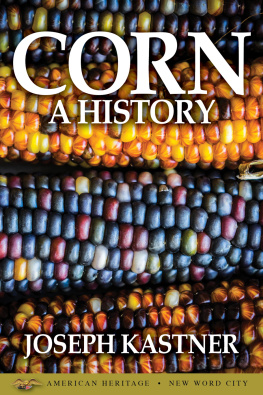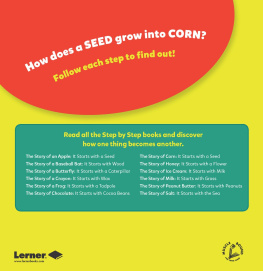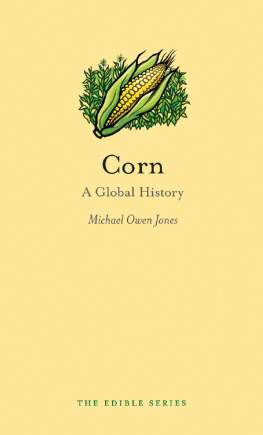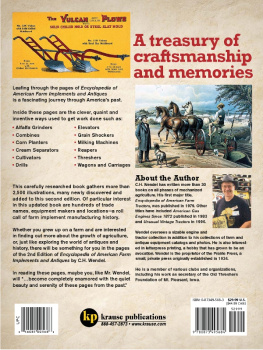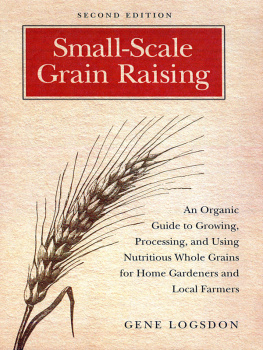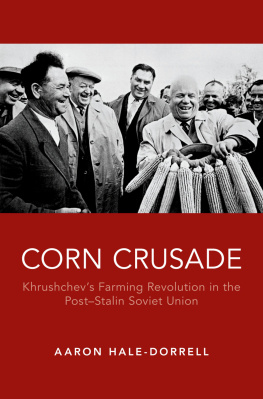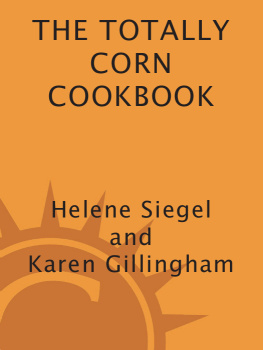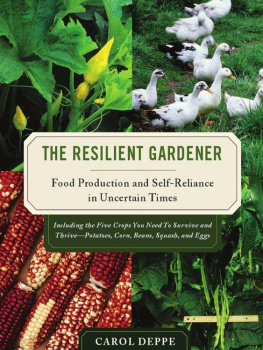Praise for Beautiful Corn
Never has there been such a book that covers corn so completely and in such an ecologically sound way. From the historical origins and uses by the early domesticators to the modern methods of mass production agriculture this book shows the reader the proper way to grow, harvest and use corn in an environmentally friendly way. Anthony shows us how the entire process can be ecologically friendly and help contribute to a happier healthier world for all.
Glenn and Linda Drowns, Sand Hill Preservation Center
Corn is a great gift to the world from the Americas. This essential grain, once enormous in variety, can be magical, dangerous, delicious, and life-giving. Anthony Boutards elegant clean prose guides us through its story from history to science to politics to recipe to cultivation. Beautiful Corn is a beautiful book.
Brian Brett, author of Trauma Farm
Anthony Boutard did a wonderful job, he was able to tell the real history of corn, including all the different species and uses of this precious crop. This is definitely the book that was missing in my personal collection about the typical products.
Aurelio Barattini, Food Of Tuscan Farmers blog, chef, teacher and restauranteur
Anthony Boutard tells a story of corn we havent heard not as fuel, or livestock feed, or food product but as whole food, with the flavor and diversity that comes with thoughtful farming. Part history, part how-to manual (Boutard grows, grinds and cooks corn in all its variations), Beautiful Corn returns the culture, and the cuisine, to our most abundant and mistreated crop.
Dan Barber, Chef / Co-Owner, Blue Hill and Blue Hill at Stone Barns
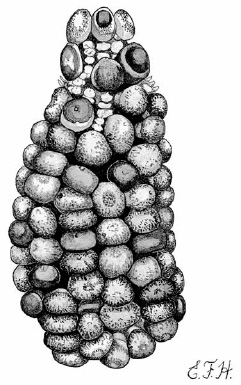
Flour corn variety from the high Andes grown at Ayers Creek.
[Illustration by Esm F. Hennessy]

Copyright 2012 by Anthony Boutard. All rights reserved.
Cover design by Diane McIntosh.
Label illustration, iStock (RoselynCarr); Corn photo: author supplied
Illustrations in text by Esm F. Hennessy.
eISBN: 978-1-55092-522-7
Inquiries regarding requests to reprint all or part of Beautiful Corn
should be addressed to New Society Publishers at the address below.
To order directly from the publishers, please call toll-free (North America)
1-800-567-6772, or order online at www.newsociety.com
Any other inquiries can be directed by mail to:
New Society Publishers
P.O. Box 189, Gabriola Island, BC V0R 1X0, Canada
(250) 247-9737
New Society Publishers mission is to publish books that contribute in fundamental ways to building an ecologically sustainable and just society, and to do so with the least possible impact on the environment, in a manner that models this vision. We are committed to doing this not just through education, but through action. The interior pages of our bound books are printed on Forest Stewardship Council-registered acid-free paper that is 100% post-consumer recycled (100% old growth forest-free), processed chlorine free, and printed with vegetable-based, low-VOC inks, with covers produced using FSC-registered stock. New Society also works to reduce its carbon footprint, and purchases carbon offsets based on an annual audit to ensure a carbon neutral footprint. For further information, or to browse our full list of books and purchase securely, visit our website at: www.newsociety.com
LIBRARY AND ARCHIVES CANADA CATALOGUING IN PUBLICATION
Boutard, Anthony
Beautiful corn : Americas original grain from
seed to plate / Anthony Boutard.
Includes bibliographical references and index.
1. Corn Seeds. 2. Corn Planting.
3. Corn Harvesting. 4. Cooking (Corn). I. Title.
SB191.M2B689 2012633.15C2012-903258-1
Contents
Writing a book about traditional corn varieties and culture entails going back to a time when gardeners and farmers cultivated a patch of corn for the family table and for animal feed. In the period spanning the late nineteenth and early twentieth centuries, state agricultural extension stations produced detailed and practical educational circulars written specifically for small farmers and backyard gardeners. As extension agents retired and corn production became big business, these publications were treated as dated tracts and mostly thrown away. Early in my research, I contacted Heiko Miles at Calendula Books, a bookseller specializing in old agricultural literature, to inquire about any old extension circulars on corn he might have. A couple of weeks later, I received a box filled with musty, brittle publications from that period. They have been valuable resources.
As photographs for the book accumulated, I realized that I needed to include clear illustrations as well. A friend had brought Esm Hennessy to visit our farm; she is a fellow of the Linnean Society of London and was an associate professor of botany at the University of Durban-Westville, South Africa, before retiring in Oregon. It was great fun walking about the farm with such a distinguished and engaging botanist. Later, Esm showed my wife, Carol, and me her exquisite orchid and butterfly illustrations. Remembering Esms work, I asked her if she would be willing to draw some illustrations for the book. She did not just say yes; she said it would be great fun. Esm was right. I had great fun, and I deeply appreciate her guidance and artwork.
Market Fridays are a day when we prepare for the weekend farmers market, and various friends have helped us. Initially, Carol and I cooked a hearty lunch to keep people working through the afternoon. When Linda Colwell and China Tresemer joined us on those Fridays, they started bringing the meal to us, as well as helping dig parsnips, horseradish, and burdock, harvest greens, and grind corn. Neither Carol nor I have formal culinary training, whereas Linda and China are professionally trained chefs. Both China and Linda offered recipe ideas for the book and helped test the final recipes. Linda also allowed me to use some of her photographs from Mexico and Romania in the book.
Zenn Martinez and Abel Herrera have worked with me at Ayers Creek for the past fourteen years. Both have a keen sense of observation in the field, honed by decades of farming and a strong commitment to organic agriculture. They have been patient guides and I have learned a great deal from them. I am very fortunate to work with them.
My friend Martie Sucec provided valuable encouragement, advice, and probative questions as I worked on the manuscript. Ellen Wheat pushed me towards greater clarity through a gauntlet of helpful editorial inquiries.
During the writing and editing, Carol has patiently absorbed some of my tasks on the farm to free up my time. Saint Anthony may be the patron saint of lost articles, but I need Carol to find them. And thanks to Caroline, our daughter the scientist, for reviewing the drafts and for her occasional gentle query, Are you sure about this? I have done my best, Caroline.
Ayers Creek establishes the western boundary of the farm where my wife, Carol, and I live in western Oregon. We are located in the Wapato Valley, between the city of Portland and the Coast Range, just a bit south of the town of Gaston. The creek provides the farms name as well as the water for irrigating our crops. The land is a mixture of rolling oak savannah, marshy wetland, and about eighty acres of good-quality arable soil on a bench above the creek. We operate as a market farm, selling what we harvest to local stores, restaurants, and directly to the public. Our crops include many types of plums, tart cherries, walnuts, chestnuts, table grapes, legumes, grains, and a variety of vegetables. Among the crops we grow is corn.
Next page

